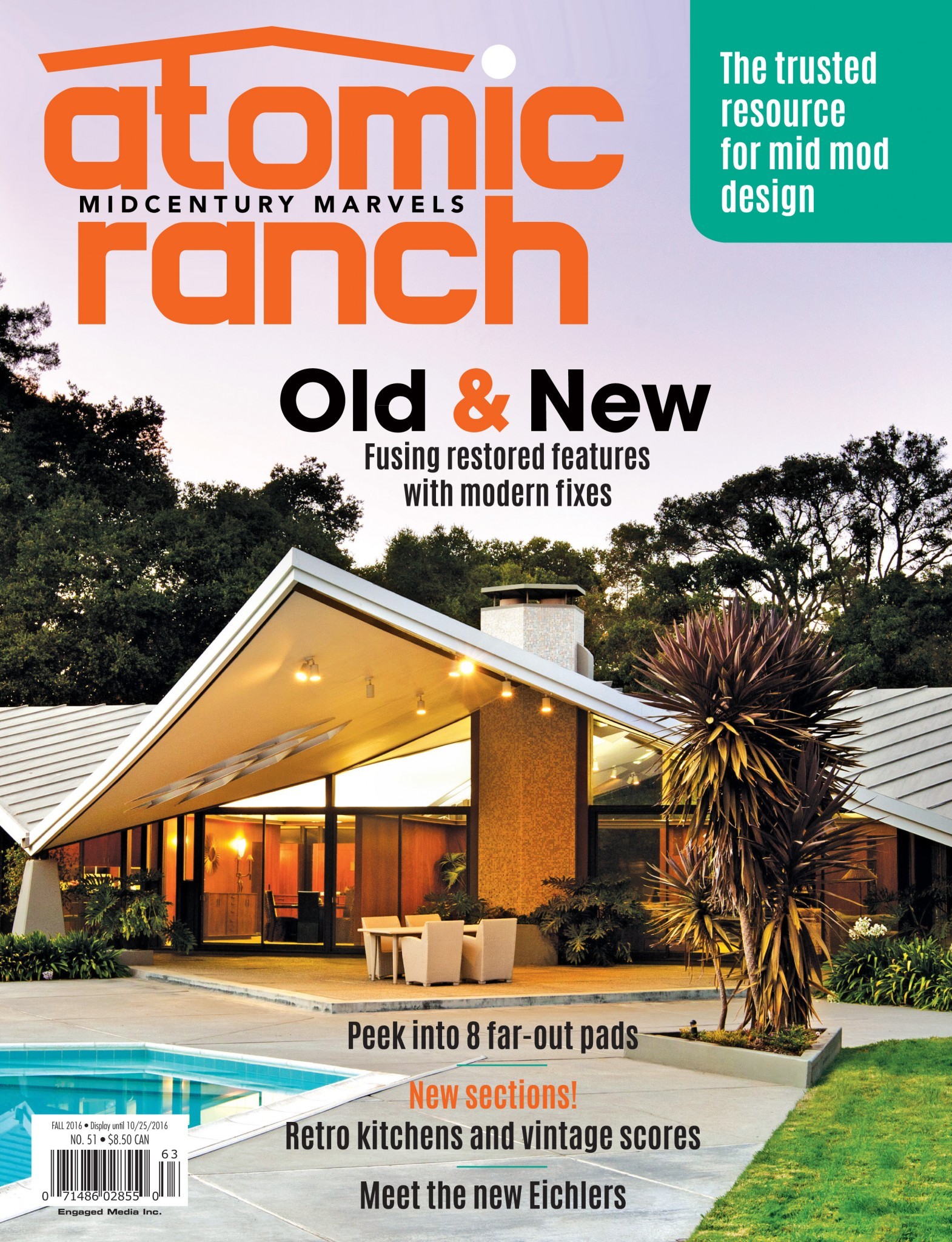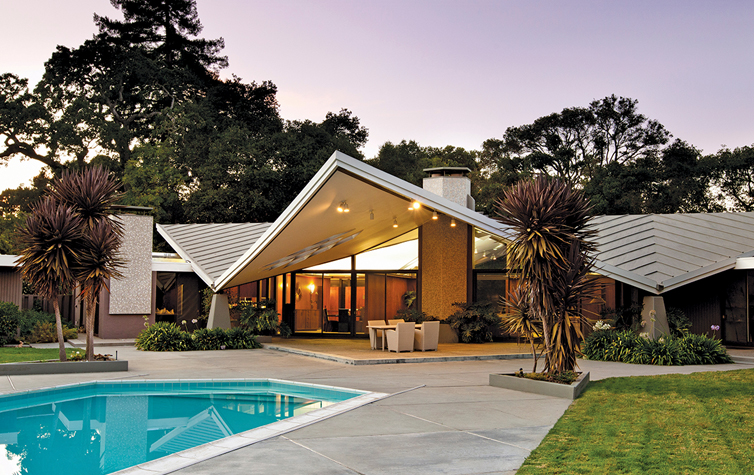
Our fall issue’s cover home comes with a story—and that story is more than its stunning architecture, a shining example of midcentury architecture brought to life by two talented members of Joseph Eichler’s team. And, as many of our ardent fans already know, this story doesn’t have a happy ending.
Atherton’s Floating Roof
Built in 1957 for developer Elmer Gavello by Bob Anshen and Steve Allen, this home’s 3,650 square feet impress—but nothing impresses quite as much as the roof, which almost seems to float off its joists. Anshen and Allen are quoted as describing the Atherton, Calif., roof as being, “a broad, floating cross-gable roof on steel points at four concrete bastions”—but that hardly captures its truly stunning impact, particularly on our pages.
Atomic Ranch isn’t the first publication to feature this incredible feat of steel and concrete. Not long after its completion, a San Francisco Chronicle article dubbed it “the house with the floating roof,” while Architectural Record ran a full feature on the house, discussing the Follansbee Steel Corp. sponsorship of its construction. Any true fan of Midcentury Modern architecture is sure to agree: the Atherton home is a triumph of its time.
If only the story ended there: The home was sold in June 2015 and, at 58 years old, torn down to make way for a new build.
Luckily, photographer Bernard Andre shot the home prior to its demolition, revealing a hexagonal fireplace, interior walls that only reached halfway to the soaring 16-foot roofline and an overall feeling of vast, impressive openness. As told through this photography, everything about the home says “unconventional” and, yet, it does so in the best way possible. Clean lines and unexpected features (like goldfish ponds that surround the roof’s supporting pillars) make the loss of this home a deep and sorrowful one.
Lost, But Not Forgotten
As I was hunting for the ideal home to feature on the cover of our fall issue, this home stood out to me from the get-go. That incredible roofline caught my eye, and I knew it was the perfect background for our new logo.
Only after reaching out to the photographer did I learn that this stunning piece of architecture is no longer standing. Saddened, I contemplated not including it. Would it still be relevant despite having been torn down?
As I pored over the images, I was amazed by the detail and uniqueness of the home. The accordion roofline kept me enraptured, and once my talented art director showed me the mock cover, any doubt about its place in the issue was gone. That’s when I understood: The demolition of this home does not erase its memory. Anshen and Allen’s work may have been demolished, but their work remains no less diminished in its absence.
And that is why we omitted its sad fate. We chose to give this accordion-roofed beauty a happier ending. We wanted to focus on a story that celebrated and brought awareness to the historical significance of the architecture and the passion that went into this home’s creation.
The Bigger Conversation
A few of our loyal readers have asked why we omitted the demolition, with valid comments about the value of the whole story. Some fans felt that its disappointing demise warranted direct and prominent attention.
We hear you, and, in retrospect, we agree. This is your magazine and we want to present to you the content you feel is important.
In fact, this home’s fate is the reason why a broader discussion on preservation as a whole is so vital, why this blog section exists and why—just for three pages—that home deserves to live as it once was for just a little longer. The Atomic Ranch readership has a unique and thriving passion for preservation—an interest shared deeply by myself and the rest of my team. With this shared value comes a responsibility on our part to offer quality information—educating as many readers as we can to the true value of midcentury architecture so that appreciation can lead to preservation.
My sincerest hope is that we never again lose such a beauty and that Atomic Ranch is forever able to remind people of the cultural significance of midcentury architecture. And for those of you who share in this ideal, get involved in your local preservation groups, learn about your neighborhood and never hesitate to share a preservation story with us. The more midcentury structures that exist, the more stories we will be able to bring to you for years to come.














